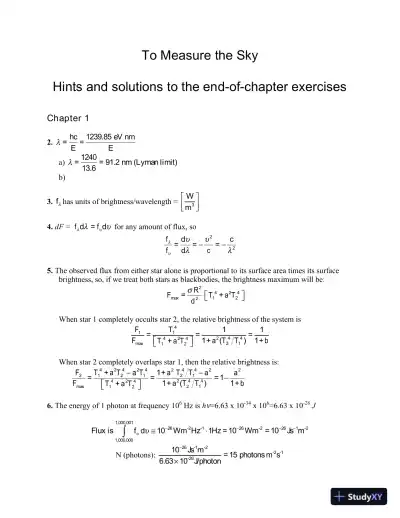Page 1

Loading page ...
Solution Manual for To Measure the Sky: An Introduction to Observational Astronomy, 2nd Edition makes solving textbook exercises easier with step-by-step solutions and helpful tips.

Loading page ...
This document has 49 pages. Sign in to access the full document!